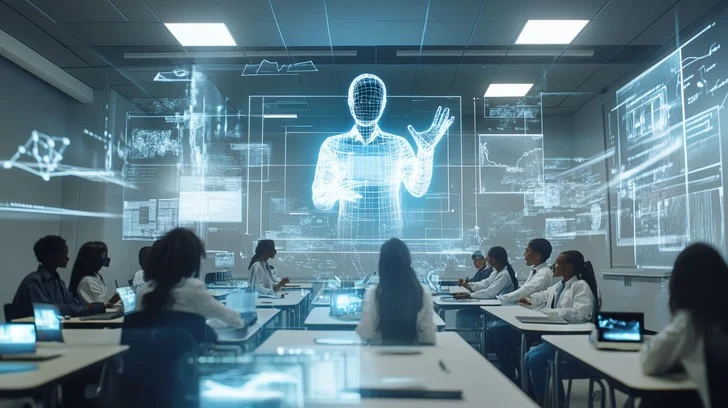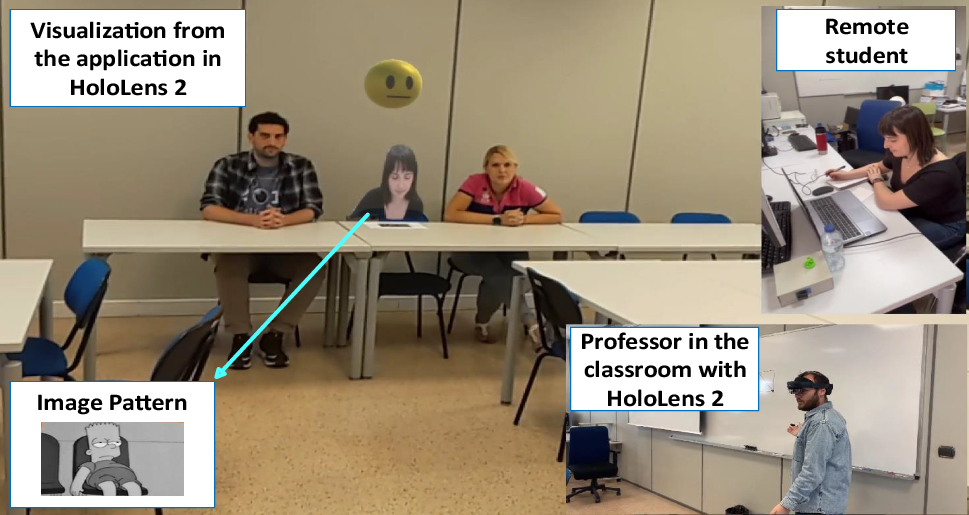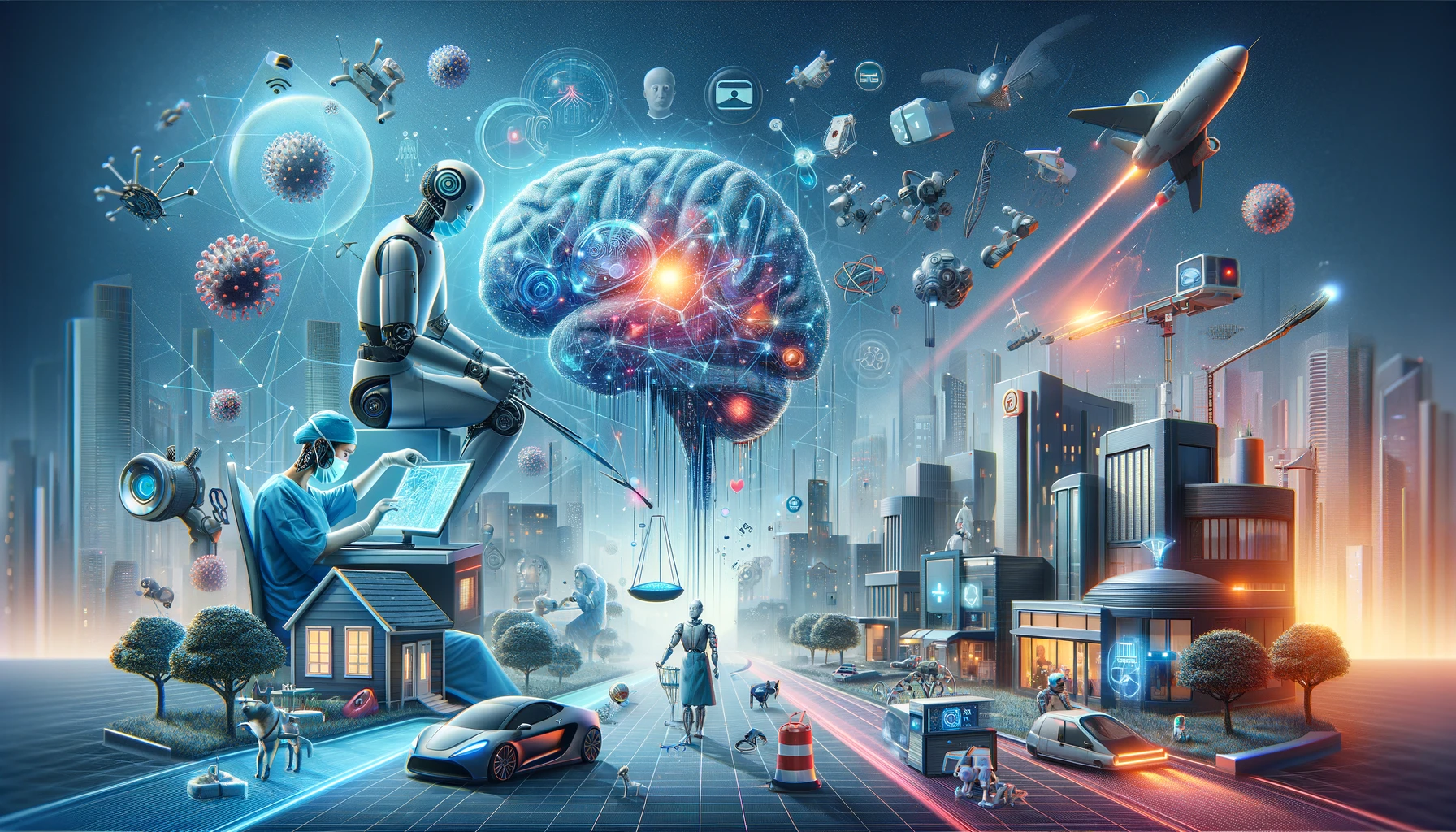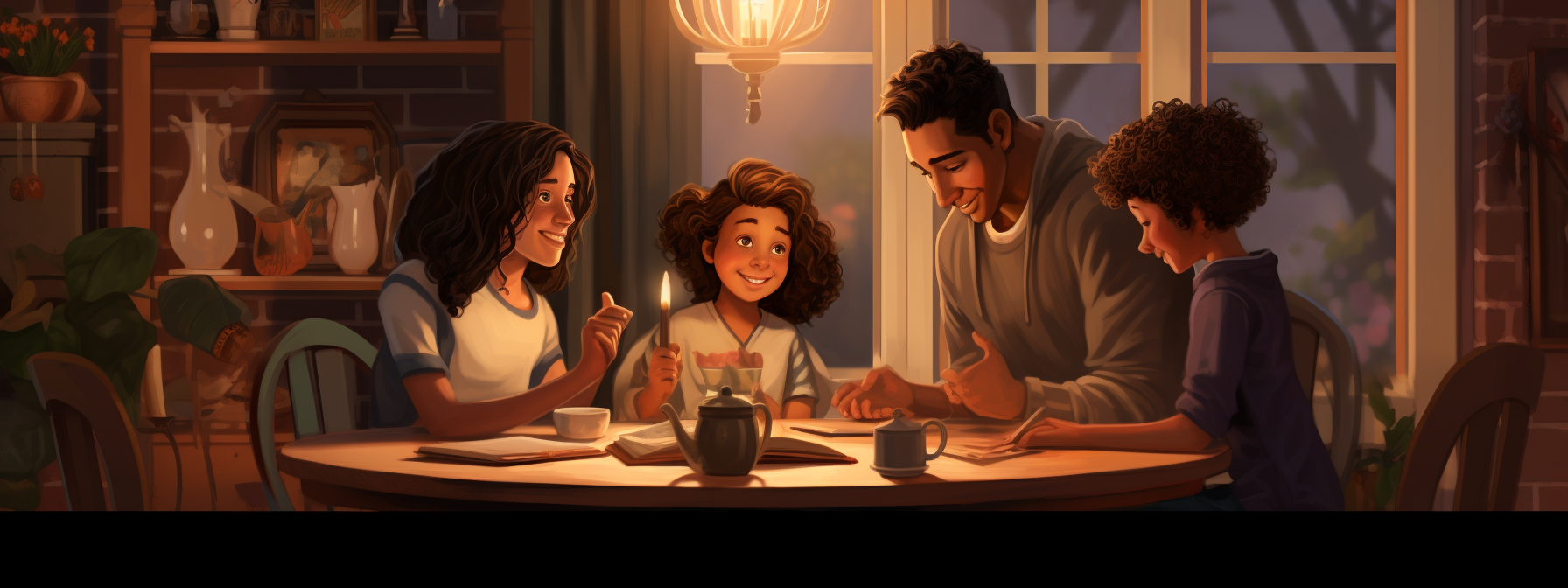
Holographic Teachers: The Next Evolution in Remote Learning
The future of remote learning is holographic, offering 3D interactive teaching.Holographic Teachers: The Next Evolution in Remote Learning
Imagine waking up for your 9 AM class, stumbling to your living room, and suddenly seeing your professor materialize before your eyes. No, you're not dreaming – welcome to the future of education with holographic teachers.
As someone who's spent years straddling the worlds of education and technology, I've seen firsthand how remote learning has transformed our educational landscape. But let's face it – Zoom fatigue is real, and staring at a flat screen all day isn't exactly conducive to engaged learning. That's where holographic teachers come in, promising to bridge the gap between the digital and physical worlds of education.

What Are Holographic Teachers?
At its core, holographic technology creates three-dimensional images using light diffraction. When applied to education, this means we can project lifelike, 3D representations of teachers into students' learning spaces. It's like having a Star Wars-style hologram, but instead of Princess Leia asking for help, it's your calculus professor explaining derivatives.
The technology behind this is fascinating. High-definition cameras capture the teacher's movements and expressions, which are then transmitted and reconstructed using specialized projection equipment. The result? A teacher who appears to be physically present, able to move, gesture, and interact in real-time.
Enhancing Engagement Through Presence
In my experience observing early prototypes, the level of engagement with holographic teachers is remarkable. Students lean in, make eye contact, and seem genuinely more attentive compared to traditional video calls. There's something about the three-dimensional presence that triggers our brain's social responses, making the interaction feel more "real."
One student I spoke with after a trial session put it perfectly: "It felt like the teacher was actually in the room with us. I found myself raising my hand to ask questions without even thinking about it."
Bridging the Remote Learning Gap
The potential for holographic teachers to improve remote learning is immense. Non-verbal cues, so crucial in effective communication, are preserved in a way that flat video simply can't match. Imagine a language teacher being able to demonstrate proper mouth movements for pronunciation, or a dance instructor showing intricate footwork – all in three dimensions.

From what I've observed, this technology could be a game-changer for subjects that require spatial understanding or physical demonstrations. Medical students could watch a holographic surgeon perform a procedure right in front of them, while engineering students could manipulate 3D models alongside their professor.
Personalization and Adaptability
Here's where things get really exciting. By integrating AI with holographic technology, we could create teaching experiences that adapt in real-time to student needs. Imagine a holographic teacher that can sense when you're confused and automatically adjust its explanation or provide additional examples.
In my hypothetical classroom of the future, each student might see a slightly different version of the holographic teacher, optimized for their learning style and pace. It's personalized learning taken to a whole new dimension – literally.
Expanding Access to Expertise
One of the most promising aspects of holographic teachers is their potential to democratize access to world-class education. A renowned physicist could lecture simultaneously to students in New York, Nairobi, and New Delhi, breaking down geographical barriers to learning.
I'm particularly excited about the possibilities for virtual field trips. Imagine a history class where students can "visit" ancient Rome, guided by a holographic expert who can walk them through the Colosseum as it appeared 2000 years ago.
Challenges and Limitations
Of course, we can't ignore the hurdles. Current technology requires significant hardware and bandwidth, making widespread adoption challenging. There's also the question of the "uncanny valley" – that unsettling feeling we get when something appears almost, but not quite, human.
Privacy concerns are another major issue. With holographic technology capturing detailed 3D images, we'll need robust safeguards to protect both student and teacher data.
Beyond Traditional Education
The applications extend far beyond traditional classrooms. I can envision corporate training sessions where holographic experts guide employees through complex procedures. Or consider the potential for special education, where holographic teachers could provide consistent, patient instruction tailored to individual needs.
Real-World Examples
While still in its infancy, holographic teaching is already being tested in various settings. The Imperial College Business School in London has used holographic technology to bring guest lecturers from around the world into their classrooms[1]. Students reported feeling more connected to the speakers compared to traditional video conferencing.
In another exciting development, the University of Central Florida is using holograms to help medical students practice patient diagnosis[5]. These virtual patients can display subtle symptoms that might be missed on a 2D screen, providing invaluable training for future healthcare professionals.
The Future of Teaching
As this technology evolves, the role of educators will undoubtedly change. We might see the emergence of "holographic performance coaches" who help teachers optimize their virtual presence. There could be new specializations in creating interactive, holographic learning environments.
Global Impact
The potential for addressing educational inequalities globally is staggering. Holographic teachers could bring high-quality instruction to remote areas lacking qualified local educators. It could also play a crucial role in preserving endangered languages and cultural knowledge, allowing elders and experts to share their wisdom with a global audience.
Looking Ahead
As we peer into the future, the possibilities seem limitless. Could we eventually see holographic teachers integrated with haptic technology, allowing students to "feel" what they're learning? Or perhaps brain-computer interfaces that allow for direct knowledge transfer, Matrix-style?
While these ideas might sound like science fiction, the rapid pace of technological advancement suggests they might not be as far-fetched as we think.
Conclusion
Holographic teachers represent a quantum leap in the evolution of remote learning. By combining the best aspects of in-person and digital education, they have the potential to create learning experiences that are more engaging, personalized, and accessible than ever before.
As we stand on the brink of this educational revolution, one thing is clear: the future of learning is about to become a lot more three-dimensional. The question is, are we ready to step into this holographic classroom?
References
- https://blog.richardvanhooijdonk.com/en/how-vr-ar-and-holograms-are-transforming-education-and-training/
- https://axiomholographics.com/industries/learning/
- https://bise.edu.in/the-future-of-remote-learning/
- https://www.westfordonline.com/blogs/remote-learning-challenges-and-opportunities/
- https://www.aacp.org/article/holograms-revolutionize-classroom-experience
- https://www.goodschools.com.au/insights/education-updates/the-pros-and-cons-of-holographic-teachers
- https://www.bluesky-pr.com/case-studies/bse-case-studies/imperial-college-business-school
- https://www.insidehighered.com/news/tech-innovation/teaching-learning/2024/02/23/holograms-begin-beaming-classrooms
- https://www.educationandlearning.nl/news/holograms-for-learning
Immersive Language Learning: VR and AR in Foreign Language Acquisition






Comments
No comments yet. Be the first to comment!
Leave a Comment